Al Ghaydah General Hospital finds synergies in addressing quality of care and antimicrobial resistance
4 September 2024, Lahj, Yemen – Al Ghaydah General Hospital now has a quality team in place, which has led to notable improvements in hospital operations, especially in the areas of hygiene, disinfection and sterilization.
The 100-bed hospital opened in 1979 and caters to a catchment area of about 500 000 people. In 2023, it took a significant step towards enhancing health care quality and safety by creating a dedicated quality team. This team works with a quality committee led by the hospital director.
Enhancements led by the quality team have not only elevated the safety and cleanliness of the hospital environment but have also contributed to an increased demand for services. This reflects the community’s growing trust in the facility’s capabilities.
In addition, the hospital has embraced self-financing of continuous professional education programmes for its staff, to uphold high standards of care – and keep improving on these.
A key focus for the hospital has been the fight against antimicrobial resistance, an issue of global concern. Through targeted culture examinations for all patients in intensive care, the hospital has personalized its approach to antibiotic treatment. In this way, it aims to effectively manage infections while conserving patient immunity and curtailing the spread of resistance. This initiative is part of the hospital’s broader commitment to enhance antibiotic stewardship and reduce the occurrence of resistant infections.
Moreover, Al Ghaydah General Hospital has optimized its waste management processes, adding an incinerator for efficient waste disposal. It has implemented the WHO Safe Childbirth Checklist, as well as rigorous management of patient medical records. And it has introduced a triage policy in the emergency department, exemplifying the hospital’s dedication to efficient patient flow and prioritization based on clinical urgency.
By making these changes and aligning operations with WHO-recommended practices, Al Ghaydah General Hospital underscores its unwavering commitment to health care quality and patient safety.
WHO supports quality of care capacity-building in this hospital as part of the Emergency Human Capital Project implemented in partnership with the World Bank.
Ibn Khaldoun Hospital takes comprehensive action for patient safety
4 September 2024, Lahj, Yemen – Ibn Khaldoun Hospital in Lahj embarked on a journey towards enhanced health care quality and management stability under the leadership of Dr Majeed Atif. This endeavour began soon after his appointment as hospital director in 2022.
A dedicated quality team and committee were set up in 2022, marking a new era of commitment to quality improvement and patient safety. The hospital, which opened its doors in 1990, has a 250-bed capacity and serves a significant catchment area of more than 1.5 million people.
Its management has since undertaken several initiatives to ensure continuous quality improvement. A cornerstone of these efforts is the development of an annual quality plan. This is rigorously followed up and evaluated to ensure ongoing advances in hospital operations and patient care.
Further strengthening its commitment to patient safety, Ibn Khaldoun Hospital has implemented WHO checklists for safe surgeries and childbirth. It has also established policies for accurate patient identification at all stages of diagnosis and treatment.
In line with WHO-recommended infection prevention and control measures, the hospital has adopted Yemen’s national infection prevention and control guidelines. These include enhanced hygiene practices, advanced sterilization and safe injection protocols, proper management of health care waste, and consistent use of personal protective equipment. Handwashing stations have also been set up across the hospital to reinforce efforts to prevent the spread of infections.
In the realm of pharmaceutical management, Ibn Khaldoun Hospital prioritizes the safe handling of high-risk medications and the precise monitoring of patient records. This approach ensures drug safety and appropriate treatment.
This multipronged approach – spanning planning, adoption of protocols and guidelines, and investments in patient records management and medical supplies and consumables – is contributing to enhanced quality of care for patients in Lahj governorate.
WHO supports quality of care capacity-building in this hospital as part of the Emergency Human Capital Project implemented in partnership with the World Bank.
Khalifa Hospital applies protocols to enhance patient safety during surgery and childbirth
4 September 2024, Taizz, Yemen – In 2023, Khalifa Hospital in Taizz significantly boosted its commitment to quality health care by adding a dedicated quality team. Focusing on infection prevention and control, follow-up and evaluation, this team works with a quality committee led by the hospital director.
Established in 1989, this 220-bed capacity hospital is a vital health facility, serving a catchment area of about 1 million people. Annually, the hospital has 55 000 outpatient visits, 17 000 emergency cases and 5000 inpatient admissions.
The quality team has noticeably improved the hospital’s services. This progress was acknowledged on World Patient Safety Day, 17 September 2023. Both WHO and the Ministry of Public Health and Population celebrated the hospital for its adoption of safety protocols for surgery and childbirth. This approach underscores the facility’s commitment to enhance patient safety and quality of care.
A WHO team visited Khalifa Hospital in October 2023, as part of implementing the Emergency Human Capital Project (EHCP), and met with key health workers in the surgical and maternity departments. Dr Mazen Al-Zuberi, General Manager; Dr Abdullah Noamaan, District Health Office Manager; and Dr Abdulazeez Al-Selwi, Head of the Quality Department, shared insights into the transformative impact of adopting the WHO Surgical Safety Checklist.
This tool has significantly reduced medical errors and enhanced patient safety – a major stride towards better quality of care. Anaesthetist Dr Basheer Abbas shared the Surgical Safety Checklist’s practical benefits, emphasizing its role in identifying patients with underlying conditions that contraindicate surgery, thereby enhancing personalized patient care.
In 2023, Khalifa Hospital embarked on a crucial WHO-led training initiative, with sessions aiming to strengthen infection prevention and control practices. This pivotal effort led to significantly enhanced hand hygiene protocols and more effective use of personal protective equipment. Both will contribute to reduce health care-associated infections.
Integrating the Surgical Safety Checklist, as well as the WHO Safe Childbirth Checklist, into clinical routines substantially improves the safety of surgical and childbirth procedures. The hospital has also advanced its waste management and sterilization processes, reinforcing a safe and clean treatment environment.
The hospital expects these improvements to lead to lower maternal and neonatal mortality rates and a decrease in postsurgical complications. The initiative has also sparked a cultural shift towards prioritizing safety and quality of care.
WHO supports quality of care capacity-building in this hospital as part of the Emergency Human Capital Project implemented in partnership with the World Bank.
Marib General Hospital invests in resilience to enhance quality of care
4 September 2024, Marib, Yemen – Marib General Hospital, established in 2005, is located near active conflict zones and amid a hub of displaced populations. As such, it serves as a critical health facility for some of the most vulnerable.
With a 180-bed capacity and an average bed occupancy of 75%, it caters to a vast catchment area of 3 million people, handling more than 10000 inpatient cases annually.
In response to pressing needs, the hospital has made several attempts to establish a quality team. The latest effort, in 2022, was successful, and the team has been instrumental in applying the WHO Surgical Safety Checklist and enhancing quality across multiple areas, even amid severe patient overcrowding. These areas include infection prevention and control, and sterilization.
This commitment to quality has set Marib General Hospital apart from other facilities. It has also cemented the hospital’s relationship with local authorities, which have provided financial support in recognition of the hospital’s role in alleviating the health burden on the governorate. The hospital management’s dedication to quality health care is further evidenced by the engagement of an external quality specialist, funded via local authority support.
A WHO team visited the hospital in March 2023 and commended its implementation of quality, safety, and infection control measures across departments. Marib General Hospital stands out for its ongoing workforce training, self-financing initiatives, and proactive approach to continuous evaluation and improvement. Regular management meetings are held to discuss service quality, identify service gaps and come up with solutions. Special meetings consider patient morbidity and mortality to improve care outcomes.
Effective use of quality standards demonstrates a comprehensive approach to ensuring patient safety and quality. Among others, the hospital has implemented the Surgical Safety Checklist, as well as the WHO Safe Childbirth Checklist; infection control protocols; water, sanitation and hygiene standards; and standards for the management of pharmaceutical supplies.
Through these measures, Marib General Hospital not only addresses the immediate health needs of its community but also lays the foundations for ongoing improvements in health service delivery. In this way, it serves as a model of resilience.
WHO supports quality of care capacity-building in this hospital as part of the Emergency Human Capital Project implemented in partnership with the World Bank.
Kara Hospital works with WHO to provide quality care for all
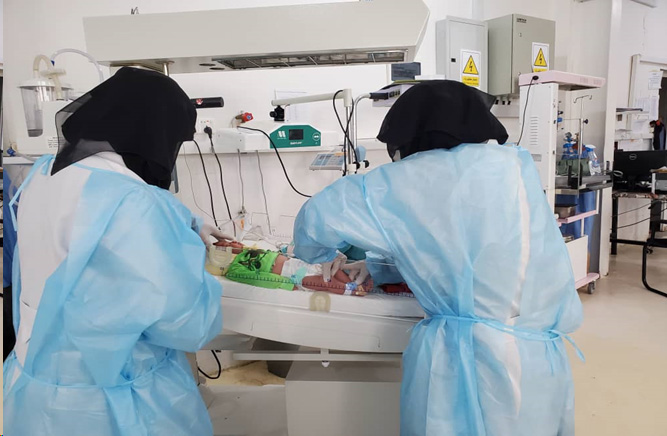 4 September 2024, Marib, Yemen – Kara Hospital is a critical health service provider for over 2 million people from Marib and neighbouring governorates such as Al Bayda, Al Jawf and Shabwah. Having opened its doors in 2010, it was upgraded to a governorate hospital in 2017.
4 September 2024, Marib, Yemen – Kara Hospital is a critical health service provider for over 2 million people from Marib and neighbouring governorates such as Al Bayda, Al Jawf and Shabwah. Having opened its doors in 2010, it was upgraded to a governorate hospital in 2017.
Its strategic location on the main road between Yemen and Saudi Arabia makes it a critical first responder to road traffic injuries. The hospital also provides a wide range of services, including general emergency care, various surgical services, and maternal and child health services, as well as outpatient services. It does this in a context of thousands of people having been internally displaced to Marib by the war and amid damage to other health facilities.
In 2023, Kara Hospital took significant strides to enhance its quality of care by creating a dedicated quality team. With WHO’s support, the hospital assessed and improved its compliance with national quality standards, achieving an impressive 86% compliance rate. The Minister of Public Health and Population recently recognized the hospital’s dedication to quality and patient safety with an award.
Kara Hospital’s quality team has worked to enhance infection prevention and control; set up a central sterilization department; and formed a committee for continuous improvement, based on the local burden of morbidity and mortality.
The hospital has focused on efficient medical waste management; regular workforce training; and patient rights, ensuring high-quality, respectful care. A culture of accountability has been promoted through regular audits, departmental competitions to uphold quality standards, and community engagement through health awareness campaigns.
These efforts have led to substantial community trust, and support from local authorities to enhance hospital infrastructure. A maternal and child health building, an administrative building and a power station have been added, and extensive landscaping efforts made.
The hospital’s dedication to quality care is clear from its service use figures. In 2023, it was responsible for about 100 000 outpatient visits, mostly from women and girls; 55 000 emergency department visits; 10 000 inpatient admissions; and 10 000 births.
With the support of WHO, the community and local authorities, Kara Hospital has become a pillar of quality health care provision in Marib – both for internally displaced people and host communities.
WHO supports quality of care capacity-building in this hospital as part of the Emergency Human Capital Project implemented in partnership with the World Bank.
Enhancing quality of care in Yemen’s health sector
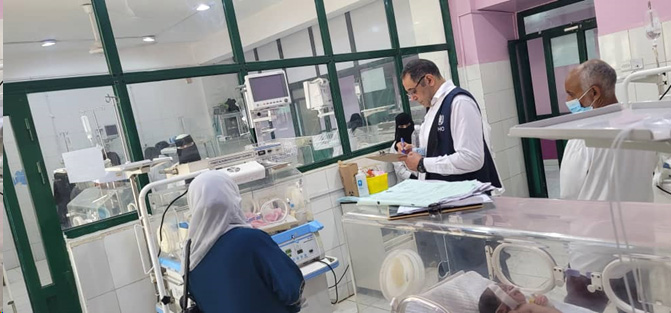 4 September, Aden, Yemen – Access to quality health care can mean the difference between life and death for patients.
4 September, Aden, Yemen – Access to quality health care can mean the difference between life and death for patients.
WHO Representative to Yemen Dr Arturo Pesigan explained: “In low- and middle-income countries such as Yemen, as many as 1 in 4 hospitalizations result in harm and 1 in 24 people die from unsafe care. This is a serious situation that needs to be addressed through action to strengthen the health system.”
Under the Emergency Human Capital Project (EHCP), supported by the World Bank, WHO provides holistic support to the authorities to enhance quality of care in Yemen’s health sector. This support began with training more than 2000 senior health workers on hospital care and management from 2019 onwards under the Emergency Health and Nutrition Project (EHNP), the predecessor project to EHCP.
Collaboration on quality of care has been significantly scaled up under the leadership of Minister of Public Health and Population His Excellency Dr Qasem Buhaibeh, who sees quality of care as a flagship ministerial initiative.
Said Dr Buhaibeh: “In collaboration with WHO, we have endorsed national quality standards, we have trained more than 400 health workers in applying these standards to their work, and developed improvement plans at all hospitals in the southern governorates to improve compliance.”
Read the success stories below to learn about the excellent progress made by 5 hospitals in Yemen to improve quality of care.
Related links
World Patient Safety Day 2023: “Engaging Patients for Patient Safety” takes center stage in Yemen
Striving for the right to health and sustainable development in Yemen
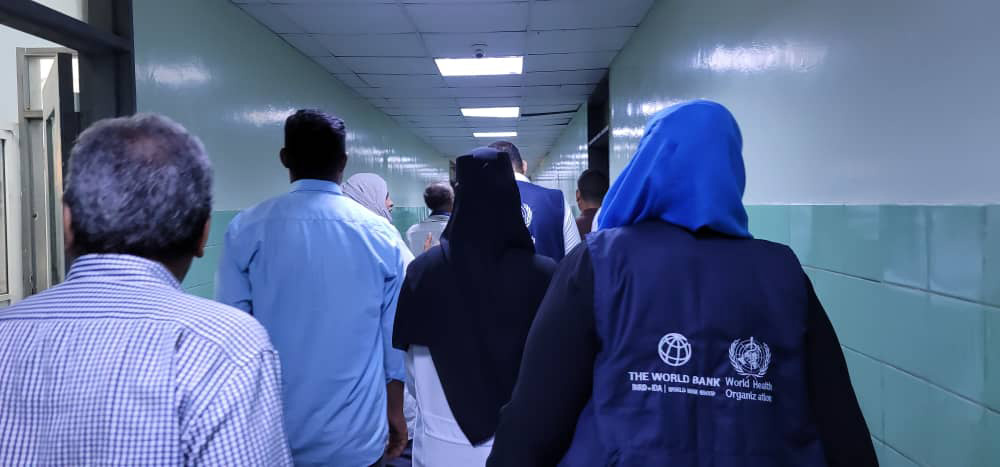 Doaa Shihab, WHO Technical Officer conducts a field visit to Al Jomhoria Hospital in Aden, an EHCP supported facility. Photo credit: WHO Yemen/ A. Abdulqawi21 August 2024, Aden and Sana’a, Yemen – WHO is championing the right to quality health services for everyone, everywhere. In Yemen, despite immense efforts from all partners, this right is yet to be realized.
Doaa Shihab, WHO Technical Officer conducts a field visit to Al Jomhoria Hospital in Aden, an EHCP supported facility. Photo credit: WHO Yemen/ A. Abdulqawi21 August 2024, Aden and Sana’a, Yemen – WHO is championing the right to quality health services for everyone, everywhere. In Yemen, despite immense efforts from all partners, this right is yet to be realized.
People in Yemen have lived through a decade of conflict. Although there have been some moves towards peace, the political, economic and social contexts are still precarious. Standing by WHO in seeking to enhance health services to achieve better population well-being is the World Bank. It has provided WHO with financial support and technical collaboration to ensure that the backbone of Yemen’s health system remains intact.
The partnership between WHO and the World Bank in Yemen began in 2017, with the Emergency Health and Nutrition Project (EHNP). In 2021, EHNP was replaced by the Emergency Human Capital Project (EHCP), which is still ongoing. In addition, the Yemen COVID-19 Response Project (2020–2022) provided life-saving support during the COVID-19 emergency. It also led to lasting health system improvements in Yemen.
As a successor project, EHCP continues essential interventions started under EHNP, including to deliver fuel for electricity, plus oxygen, medicines and other supplies to about 100 hospitals across Yemen. EHCP also aspires to shift efforts across the humanitarian–development–peace nexus, towards building sustainable institutional and individual capacities that strengthen Yemen’s health system and human capital.
EHCP delivers in 3 key areas: health, nutrition, and water, sanitation and hygiene (WASH). WHO implements the project with the United Nations Children’s Fund (UNICEF) and the United Nations Office for Project Services (UNOPS), working with the authorities in Yemen.
Minister of Public Health and Population Dr Qasem Buhaibeh explained: “EHCP really is a lifeline for the health sector, from which millions of Yemenis benefit. To make the most of this project, we are increasingly focusing on enhancing the quality of care and building local capacities so that the gains we have made can be sustained in future.”
Through the project, WHO and UNICEF can support service delivery at more than 2400 health facilities. The agencies have worked with more than 12 000 health professionals to enhance their skills through capacity-building activities.
WHO Representative to Yemen Dr Arturo Pesigan described the impact of the project: “Under EHCP so far, about 13 million people have received essential health, nutrition and WASH services, including 7 million women, 4 million children and 620 000 pregnant women.”
In WHO, interventions under EHCP are implemented within the broader framework of the Yemen–WHO Country Cooperation Strategy 2024–2025. This aligns with the United Nations Yemen Sustainable Development Cooperation Framework 2022–2024.
The funding outlook for Yemen continues to be uncertain, as donors are prioritizing crises in other parts of the world. An injection of additional resources will be critical for EHCP activities to continue. All the while, WHO, UNICEF and UNOPS are working with Yemen’s authorities to identify ways to increase project efficiencies and maximize the sustainable impacts of activities.
Related links
The World Bank and WHO in Yemen, 2017–2022: preventing collapse, building resilience
Yemen: daily battles against poverty and hunger
 28 August 2024, Aden, Yemen – Mohamed Khalil a 2-year-old boy from Al-Khawkhah district in Hodeida, suffers from severe acute malnutrition with medical complications. His belly is swollen and his body is frail. When he began vomiting every time he ate, his mother scraped together what money she could from family and friends and took him to Al-Saddaqa Hospital in Aden.
28 August 2024, Aden, Yemen – Mohamed Khalil a 2-year-old boy from Al-Khawkhah district in Hodeida, suffers from severe acute malnutrition with medical complications. His belly is swollen and his body is frail. When he began vomiting every time he ate, his mother scraped together what money she could from family and friends and took him to Al-Saddaqa Hospital in Aden.
Mohamed’s mother has 4 children, the youngest just 4 months old. She struggles to feed her family. As the prices of basic food items continue to rise, it becomes daily more difficult to make ends meet. “The cost of living is becoming unbearable. We can barely afford enough food for everyone," she says.
Despite these hardships, she is determined that Mohamed gets the care he needs.
"The doctors at the hospital are kind. They provide milk for free, medicines, lab investigations, and meals for me but we still need to pay for additional specialized tests. I don’t know how we will manage. I just want my son to get healthy, but it’s distressing when I can’t afford everything he needs.”
The August 2024 Integrated Food Security Phase Classification (IPC) report revealed that 50% of the population in Yemen’s southern governorates face acute food insecurity. The situation is exacerbated by reduced humanitarian aid and economic decline. The depreciation of the Yemeni Riyal has increased fuel prices and compounded already limited access to food.
The high prevalence of diseases such as cholera and measles, limited access to safe water, and inadequate sanitation contribute to worsening nutritional and medical conditions, while the displacement of populations and loss of livelihoods due to conflict place additional strains on Yemeni families.
Faiza Al-Maktari, a nurse in the nutrition department at Saddaqa Hospital, represents hope for families desperately seeking care for their children. Faiza says her work blends joy and sadness and speaks of “holding a frail baby and watching them recover” as akin to “witnessing a small miracle”.
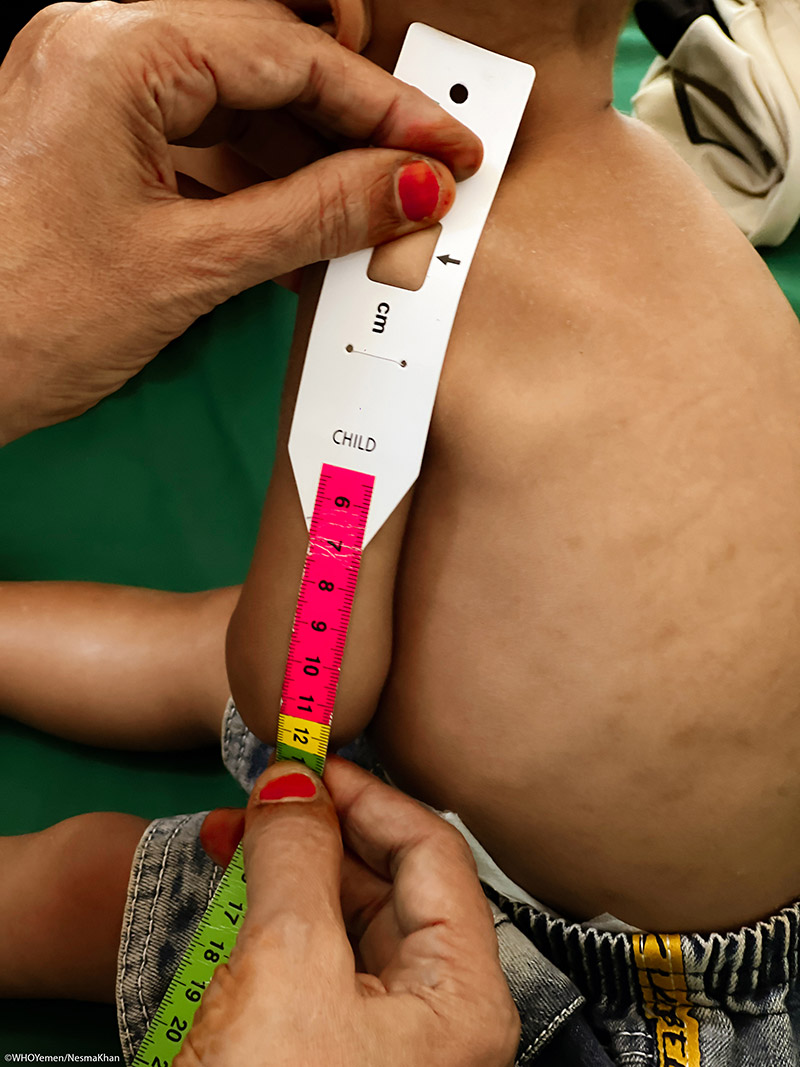 Her department is stretched to breaking point as increasing numbers of malnourished children from nearby governorates, especially the West Coast region, strain essential supplies, leaving the staff to cope with decreasing resources. Despite the challenges, Faiza remains undeterred. She dedicates time to comforting anxious mothers, offering a listening ear and kind words.
Her department is stretched to breaking point as increasing numbers of malnourished children from nearby governorates, especially the West Coast region, strain essential supplies, leaving the staff to cope with decreasing resources. Despite the challenges, Faiza remains undeterred. She dedicates time to comforting anxious mothers, offering a listening ear and kind words.
“I try to give them hope,” she says. “Sometimes, a little kindness goes a long way.”
The 7 supported therapeutic feeding centres (TFC), 4 of them embedded in pediatric wards, operating in regions with high malnutrition rates, high levels of internal displacement and severe food insecurity, provided lifesaving services to over 5129 children between October 2023 and July 2024, addressing acute malnutrition cases with serious co-morbidities.
The TFCs offer round-the-clock, lifesaving health and nutrition care for severely malnourished children. Sustaining these services is vital to saving children’s lives. To alleviate the financial burden on families, caregivers receive cash support for transportation, and three meals a day during the admission period, and the costs of lab tests and admission kits are fully covered.
Faiza dreams of a Yemen where no child goes hungry, and families find stability and peace.
“I’m grateful to be here, to help any way I can,” she says. “But I long for a future where our work isn’t so desperately needed.”
Leaving the hospital each day, Faiza carries with her the memories of those she has helped and those she has lost. The memories fuel her resolve to return, day after day, striving to make a difference.
“It’s never easy, but I won’t give up. Not now, not ever.”
In collaboration with the European Civil Protection and Humanitarian Aid Operations (ECHO), WHO is dedicated to enhancing child health and well-being while reducing mortality and morbidity through a protective, integrated approach. WHO supports 101 therapeutic feeding centres across Yemen, covering approximately 80% of the target caseload in the country.
WHO assists the Ministry of Public Health and Population and other partners by providing technical capacity building for case management and supplying essential medical supplies, including pediatric and severe acute malnutrition kits.
Yemen: when the rain hits hard
In war-torn Yemen, torrential rains and flooding have destroyed homes and shelters
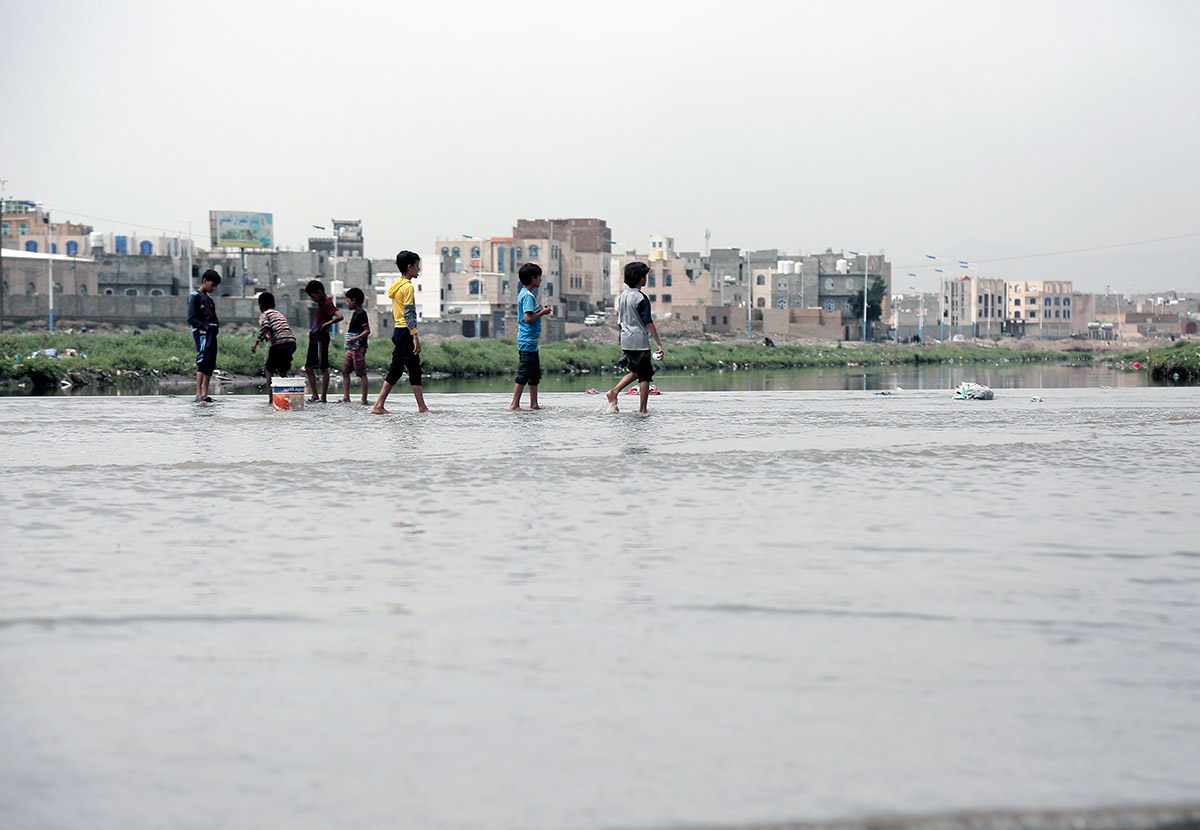 6 August 2024: children in an area affected by heavy rainfall and severe flooding in Sana'a, Yemen. Photo credit: Mohammed Hamoud/Getty Images.26 August 2024, Sana’a, Yemen – Yemen’s skies have never been so capricious. Late last month, torrents of rain turned into gushing floodwater that swept through towns and villages, leaving a trail of destruction. And now, Yemen’s western and central governorates have been warned to expect yet more heavy rain.
6 August 2024: children in an area affected by heavy rainfall and severe flooding in Sana'a, Yemen. Photo credit: Mohammed Hamoud/Getty Images.26 August 2024, Sana’a, Yemen – Yemen’s skies have never been so capricious. Late last month, torrents of rain turned into gushing floodwater that swept through towns and villages, leaving a trail of destruction. And now, Yemen’s western and central governorates have been warned to expect yet more heavy rain.
Conflict-affected countries like Yemen suffer disproportionately from climate change due to their already undermined capacities, limited resources and fragile infrastructure. The effects of ongoing conflict strain their ability to respond and adapt to these challenges, increasing public health risks, population displacement and economic instability. Despite their minimal contribution to global greenhouse gas emissions, these countries face the harshest consequences.
In Marib, over 8400 internally displaced families found themselves suddenly homeless after the destruction of 6700 shelters. Relentless rain turned streets into rivers, washing away homes, livestock and livelihoods. In the western governorate of Hodeida the situation was equally dire. As entire communities were submerged the death toll climbed steadily, with at least 36 lives lost and 564 injured.
Public infrastructure, including health facilities and roads, has been washed away. Emergency mobile medical and outreach teams are urgently needed to provide essential health services to people in rural areas affected by floods. Where health facilities did survive the flooding, they struggle with electricity shortages and the destruction of medicines and equipment.
Fuel is urgently needed by hospitals to generate electricity, health authorities are requesting essential medicines, and clean water is one of the top priorities to avoid further outbreaks of water-borne diseases in the midst of Yemen’s already widespread cholera outbreak.
The streets of Sana’a are waterlogged and littered with debris. Stagnant water is rising, and with it the risk of diseases like dengue, malaria and cholera. Without immediate intervention, many flood-affected cities face increased public health risks.
In the coming months, increased rainfall is forecast, with the central highlands, Red Sea coastal areas and portions of the southern uplands expected to receive unprecedented levels in excess of 300 millimeters.
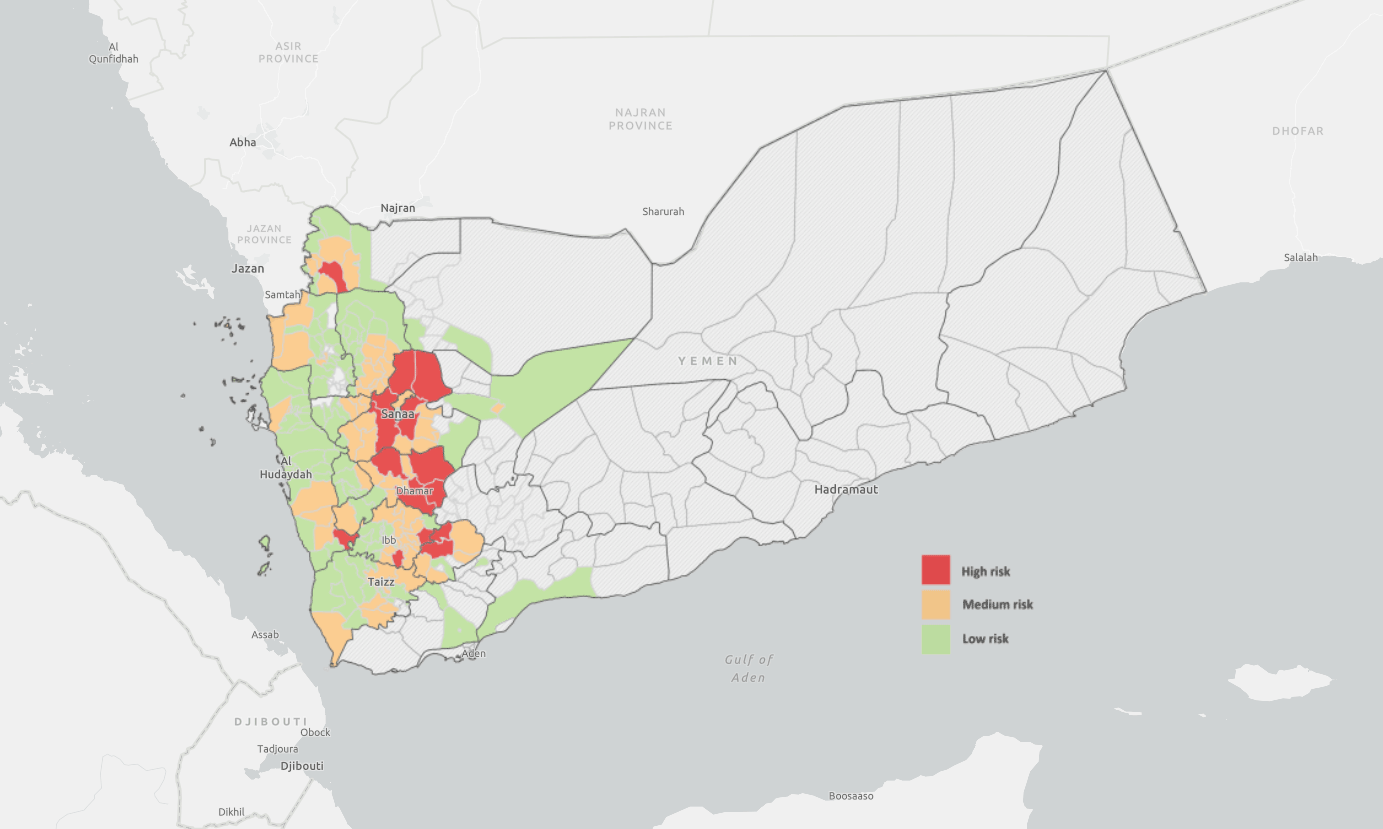 Figure 1: Flood forecast by district.
Figure 1: Flood forecast by district.
Source: Agrometeorological Early Warning Bulletin, FAO – August 2024.Before the conflict, agriculture and food security thrived on seasonal rain. Yemen’s diverse topography, ranging from coastal plains to mountainous regions, allowed for a wide range of agricultural practices. Rainfall was relatively predictable, and farmers could rely on traditional rainwater harvesting techniques such as terracing and cisterns.
Today, the infrastructure that once supported this efficient water management has been damaged or destroyed and heavy rains often lead to devastating floods, compounding the already dire humanitarian situation. In recent years, increasingly deadly flash floods have destroyed homes, shelters and vital public services, increasing the exposure of Yemen’s population to risks and facilitating the spread of diseases.
National and sub-national health clusters are working to coordinate relief efforts and the timely delivery of aid while focusing on integrating health, nutrition and water, sanitation and hygiene services into the response.
“Addressing the impact of rain in Yemen requires a multi-sectoral approach. Immediate humanitarian and health aid is crucial to provide relief to those affected by floods and other climate-related disasters,” said Dr Arturo Pesigan, WHO Representative in Yemen.
“Long-term strategies must focus on rebuilding infrastructure and restoring traditional water management systems, improving health risk preparedness and enhancing the resilience of communities against future climate shocks. International support and climate justice are essential to help Yemen recover and adapt to the changing climate.”
The humanitarian response has been swift but the scale of the disaster is overwhelming. Aid organizations – already stretched by the ongoing conflict, funding shortages and growing access constraints – are scrambling to provide emergency relief.
The needs of Yemen’s population are staggering, and the complexity of the situation grows daily more difficult.
Health workers in Yemen risk arduous journeys to reach 45 000 vulnerable women and children
19 August 2024 – Navigating rough roads and being chased by wild animals are among the challenges health workers face when reaching vulnerable people in Yemen’s remote villages.
The deterioration of the health system amid Yemen’s ongoing acute humanitarian crisis has resulted in many people being denied access to health care. They are dying from conditions that are easily treatable in other contexts.
In Lahj, a remote district in southern Yemen, internally displaced people and host communities face harsh circumstances. The problems caused by poverty and challenging weather conditions are compounded by the spread of diseases such as measles, dengue and COVID-19. This remote area lacks health services, and travel to the nearest health facility is expensive, out of most people’s reach.
To address critical health needs and protect the most vulnerable, WHO and the United States Agency for International Development (USAID) teamed up to implement public health outreach activities. Children and pregnant women were the main target groups. Integrated services spanned essential health care for childhood illnesses, malnutrition, reproductive health services, COVID-19 vaccination and measles, rubella and polio vaccination for children.
Between April 2023 and March 2024, over 9305 mobile health teams were deployed. The teams treated more than 22 000 children and 23 000 women across 107 districts, identifying critical health needs and providing life-saving interventions.
To save vulnerable lives, health workers travelled from village to village.
Hana’a Awadh, a 36-year-old health worker, faced incredible challenges reaching communities in need, travelling with her mobile team for many hours in temperatures above 45 °C.
“The journeys were arduous,” she explains. “We travelled along tough roads but the vehicles can only take us so far. Then we must walk through terrain populated by wild animals such as dogs and snakes where there is hardly any shelter.”
Before joining the mobile team, Hana’a was a nurse at Al Fiosh Health Centre’s therapeutic feeding centre in Lahj where she identified malnutrition cases aged 6 months to 5 years and after measuring the mid-upper arm circumference would prescribe treatment as needed.
Efforts to overcome vaccine hesitancy
The mobile teams included health educators who play a vital role in efforts to overcome vaccine hesitancy, countering rumours and ensuring community acceptance of vaccinations.
The health educators visited homes to address concerns, dispel rumors and hand out educational materials in the form of flyers and stickers, highlighting the objective benefits of the outreach activity and how it could support families.
“This contributed to a notable increase in families’ acceptance. We offer services that would otherwise be inaccessible due to high transportation costs,” says Hana’a.
Health educators in the outreach activity explained to people why it is vital to get vaccinations, and how they risk lives by rejecting them.
It took the threat of losing of her child for Noor to realize how crucial vaccinations are. Noor, the mother of a young boy, and her family were fearful of vaccinations because of the rumours claiming vaccinations are harmful that had spread locally.
“You will kill your child! Each time I mentioned vaccinations, this was what I heard,” explained Noor. “But I was watching him get sicker each day.”
“I feel sorry for the times I believed those who told me that vaccinations were harmful. This belief nearly cost my son’s life,” says Noor.
“He was about to die, and I wanted to die after him. Thankfully, I listened to the doctors and got him vaccinated, and gained him back. Now I’m an advocate for vaccinations.”


